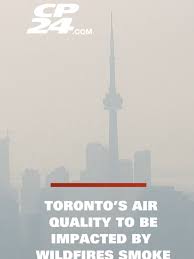Understanding Air Quality in Toronto: Key Facts and Current Trends

Introduction
Air quality remains a critical concern in urban areas, particularly in larger cities like Toronto. As a bustling metropolis, Toronto faces challenges related to pollution and environmental health that can significantly impact the well-being of its residents. Monitoring air quality is essential not just for immediate health but also for long-term public health planning and policy-making. Given the rise in environmental awareness, understanding air quality in Toronto is more relevant than ever.
Current Air Quality Trends
Recent data indicates that air quality in Toronto has shown fluctuations, particularly during the summer months when smog and particulate matter levels tend to rise. According to the City of Toronto’s air quality monitoring system, the levels of common pollutants such as nitrogen dioxide (NO2) and particulate matter (PM2.5) are closely monitored. In 2023, the average air quality index (AQI) indicates that while there are significant days of poor air quality, especially during heatwaves, the city has seen improvements in air quality metrics compared to the previous decade.
Factors influencing air quality include vehicular emissions, industrial activities, and seasonal changes. In 2023, a noticeable increase in public transport usage and cycling has been reported, contributing positively to reducing vehicular emissions. Furthermore, the implementation of the Toronto Green Standard, aimed at sustainable development, has strengthened the city’s commitment to enhancing air quality.
Public Health Implications
Health implications associated with poor air quality can lead to respiratory issues, cardiovascular diseases, and overall deterioration of public health. Health Canada has reported increased hospitalization rates related to pollution-exacerbated conditions. As such, there is a push for more green spaces and environmental initiatives to mitigate these risks. Initiatives like the Tree Planting Program and expanded cycling lanes are examples of how the city is working towards improving air quality.
Conclusions and Future Outlook
As Toronto continues to grow, the importance of maintaining good air quality cannot be overstated. The city is making commendable strides towards awareness and regulation of air pollutants, which is a positive trend in combating air quality issues. Looking ahead, ongoing efforts to engage the community, bolster public transport, and implement green resources will be vital. Additionally, investing in technology for real-time air quality monitoring will enable Toronto to adapt policies quickly in response to changing environmental conditions.
For residents, staying informed about air quality and participating in sustainable practices can contribute to a healthier environment. Overall, with continued commitment from both government and citizens, Toronto can aim for a significant improvement in its air quality standards, positively affecting the health of its populace.









